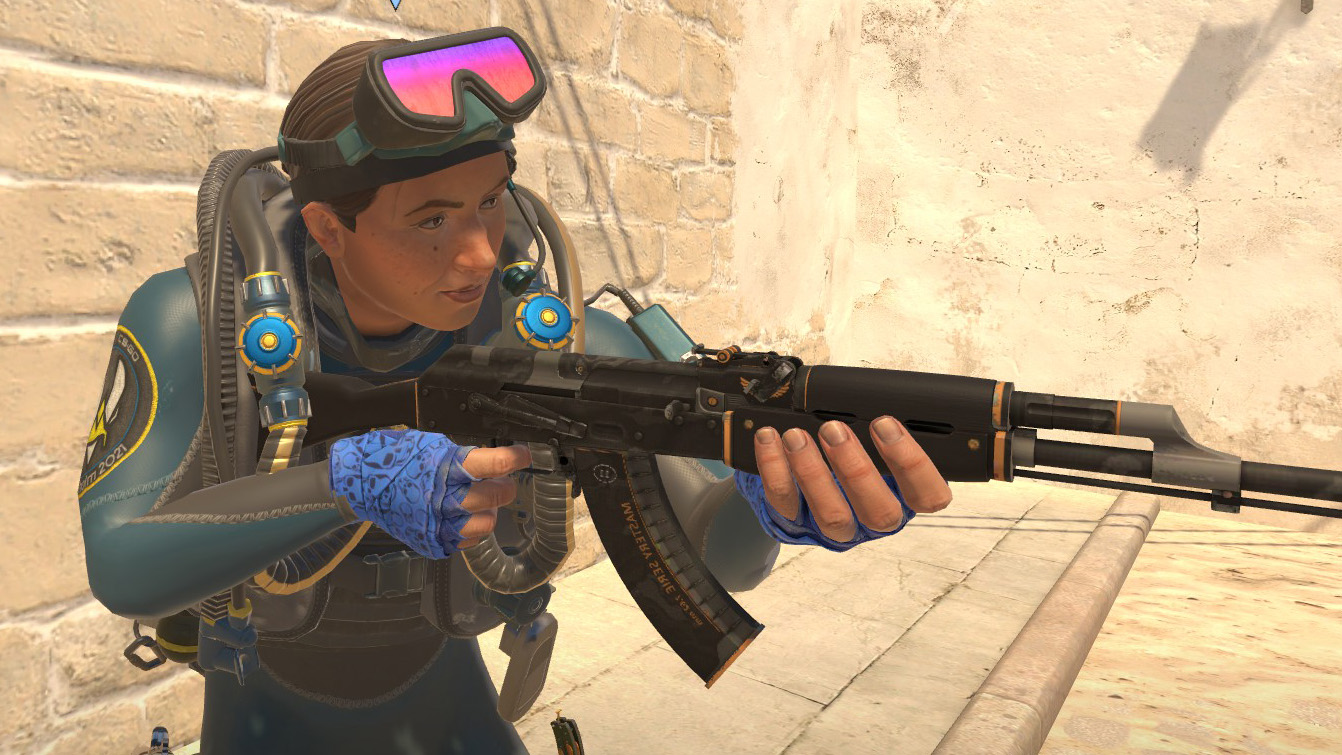On NFTs, Valve says it's only interested in 'things our players care about'
"For us, bringing the items forward is just the customer-centered way to bridge between a game and its successor."

Counter-Strike 2, the first direct sequel to one of the most important games in PC history, released on September 27 after roughly six months in a limited test period. PC Gamer recently had the chance to ask the Counter-Strike 2 development team at Valve a wide-ranging bunch of questions about the game, its history, and its future: and one of those was about a weird crossover with one of the most despised technologies on the fringes of gaming.
The people have spoken and, generally speaking, players want NFTs as far away from their games as possible. The whole web3 and crypto space is rightly viewed with scepticism as a world of scams, grifters, and frankly technology that games just don't seem to need. But at the heart of the NFT push into gaming is one big claim: this is how developers could, in theory, create items that can transfer from one game to another, and retain any in-game value while doing so.
Now you can easily pick holes in this theory, the most obvious being that different games simply are not compatible in this way. But if we accept it at face value for a moment, then Counter-Strike has just become the first series to actually do it: When the big CS2 announcement arrived, an important aspect of it was that players' inventories and in particular their gun skins (the basis of an entire thirdparty economy) would transfer from CS:GO to CS2.
And they did, flawlessly and seamlessly. I asked the CS2 dev team how they felt about, accidentally or no, validating this core concept of allowing players to retain inventories across different games.
"From the start of development we knew that CS2 would ultimately replace CS:GO," says the CS2 dev team, "and we wanted to ensure that players could keep as many of their CS:GO skills and items as possible. So, early into the process we started the work to support all of the CS:GO weapons, stickers, agents, and music in CS2.
"There were non-trivial challenges in getting older items to fit into the look and feel of the new game, but the feature was something we knew would be very important to players. For us, bringing the items forward is just the customer-centered way to bridge between a game and its successor. Sometimes people talk about NFTs in the context of Counter-Strike items, but to be honest we don't know enough about NFTs to weigh in on that conversation. We just try to make the best decisions we can about the things our players care about."
Valve employees aren't exactly going to come out and say that NFTs suck, but that last line is probably as close as you'll get to an outright dismissal from the company. And it's reasoning that tracks with what you see from players: I've written about plenty of NFT-related projects in the past and, without exception, the biggest issue people have is not with some backend technology that few of us really understand. It's that this element of it goes front-and-centre, used to push grim concepts like play-to-earn, while the game, the thing we're actually interested in as an entertainment product, gets second billing (if that).
Keep up to date with the most important stories and the best deals, as picked by the PC Gamer team.
Nevertheless some of the big publishers remain committed to these technologies, with Ubisoft and Square Enix in particular seeming to think they have some role to play in the industry's future: Ubisoft even went as far as launching its own NFT marketplace (which failed).
Valve is a company that's always seemed to focus on player behaviour and feedback first: what players want, and how it can deliver that. It may choose to remain agnostic about the technology itself, but Valve knows the bottom line with NFTs as they relate to videogames: players just don't care about them.

Rich is a games journalist with 15 years' experience, beginning his career on Edge magazine before working for a wide range of outlets, including Ars Technica, Eurogamer, GamesRadar+, Gamespot, the Guardian, IGN, the New Statesman, Polygon, and Vice. He was the editor of Kotaku UK, the UK arm of Kotaku, for three years before joining PC Gamer. He is the author of a Brief History of Video Games, a full history of the medium, which the Midwest Book Review described as "[a] must-read for serious minded game historians and curious video game connoisseurs alike."

